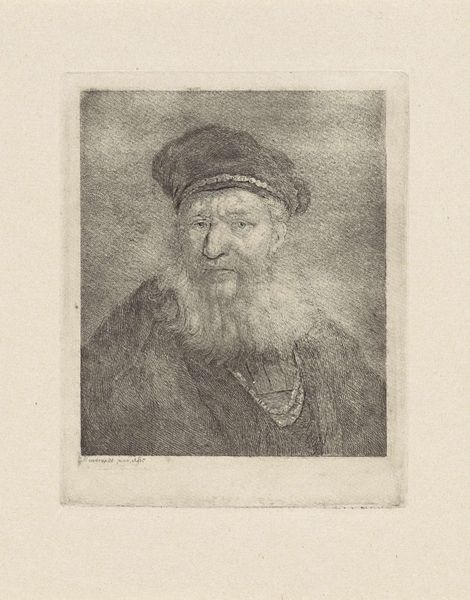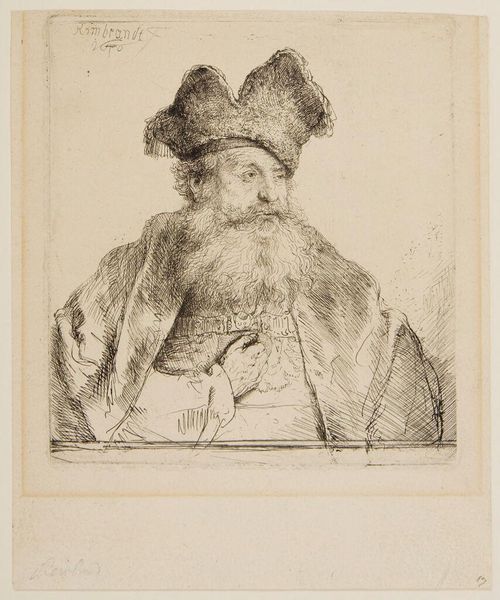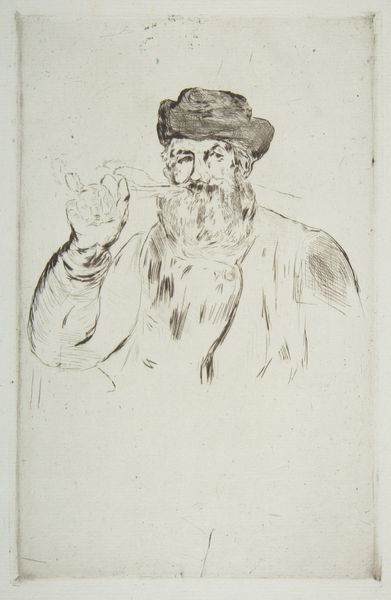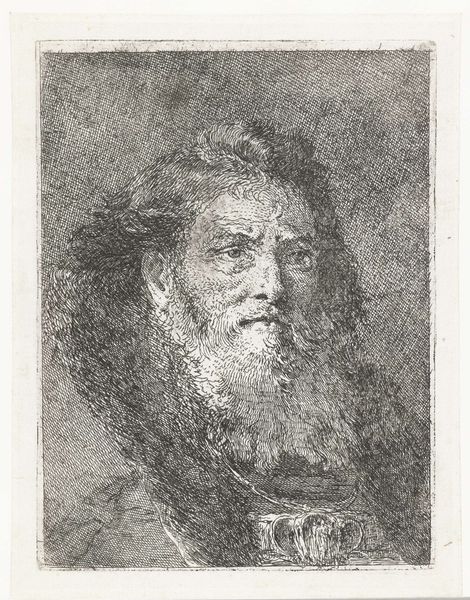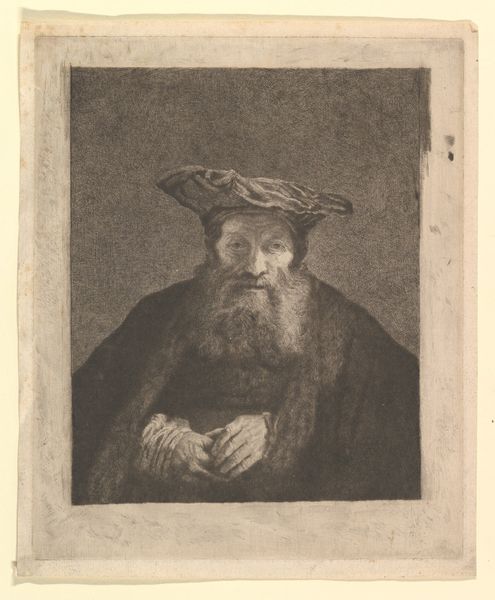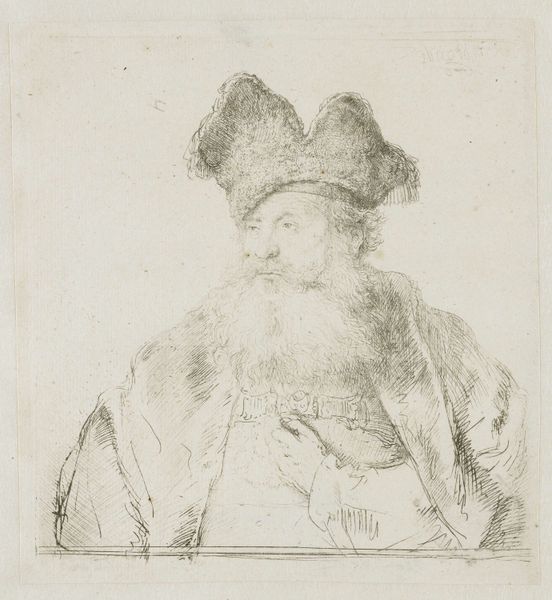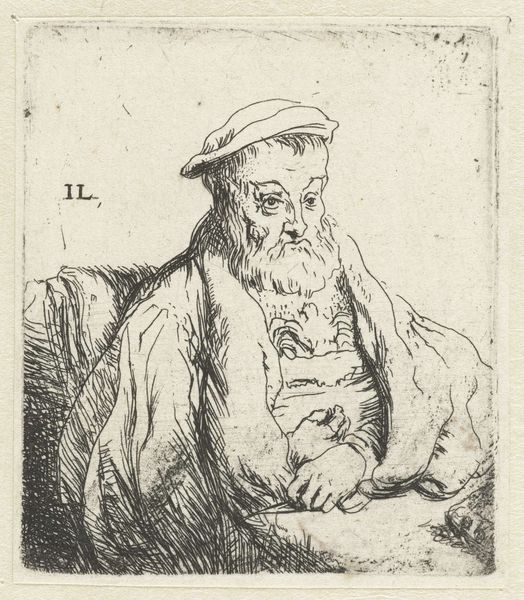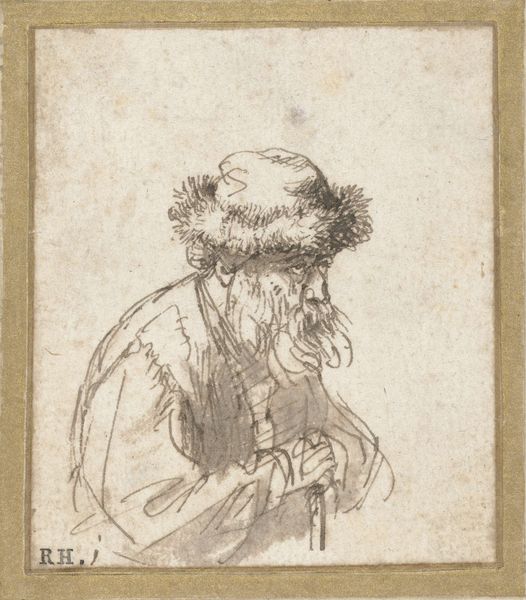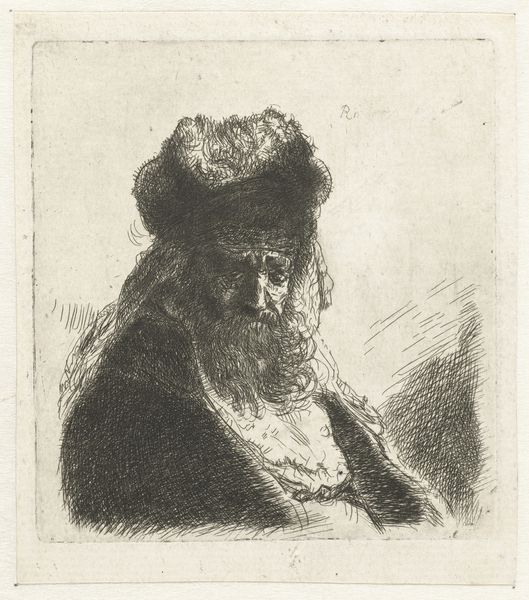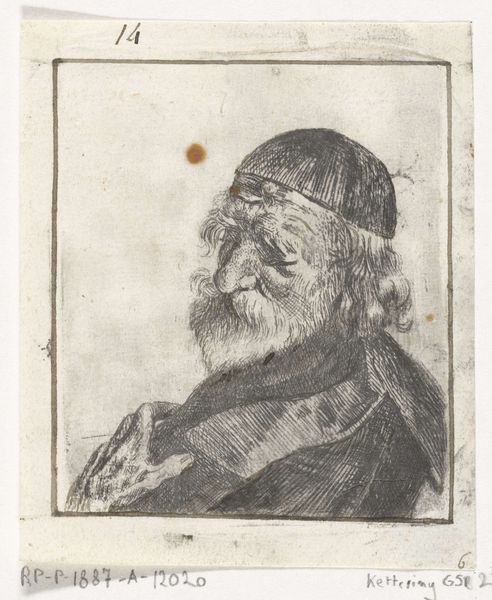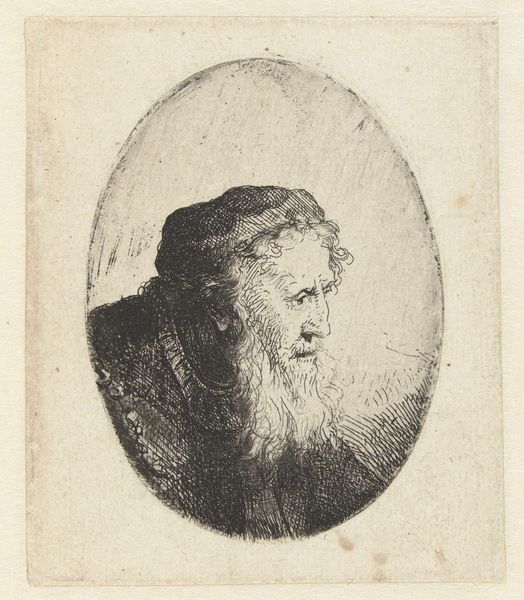
drawing, pencil
#
portrait
#
pencil drawn
#
drawing
#
pencil sketch
#
figuration
#
pencil drawing
#
romanticism
#
pencil
#
academic-art
Dimensions: height 177 mm, width 115 mm
Copyright: Rijks Museum: Open Domain
Editor: This is "Portrait of a Man with Beard and Hat," a pencil drawing made in 1812 by Diederik Jan Singendonck. It's so finely rendered. The man’s face seems really stern, but there is a certain theatrical quality to the overall composition. What strikes you when you look at it? Curator: The theatricality you noticed is key, as is the era of its making, at the height of Romanticism and its fixation on emotion and the individual. But also consider the socio-political backdrop of 1812, a Europe in upheaval under Napoleonic rule. Who did these extravagant garments truly serve? Editor: You mean beyond the person wearing them? Curator: Precisely. Think about how this portrait, with its clear display of status through costume, may implicitly support or even challenge contemporary hierarchies and ideals, especially as Romanticism was tied to revolutionary ideas and societal shifts. How do you read the subject's sternness within this historical tension? Does it project authority or perhaps a burdened conscience? Editor: That's a perspective I hadn't considered. Perhaps both. He appears aware, burdened even, by his role within a specific system. The detailed rendering emphasizes the weight and complexity of his position, actually. Curator: Exactly. It speaks volumes about the subject, but also, more widely, about the era. The portrait operates not just as a depiction but also as a commentary on identity and power. Understanding this moves us beyond simply appreciating the art, and moves us towards engaging critically with the world around us. Editor: This makes me think about how portraiture, even when seemingly straightforward, is always enmeshed in questions of representation and power. It is more than just what meets the eye. Thank you for this enlightening observation. Curator: Indeed. The power of art resides in its ability to make us question, not just to passively observe. I am glad we both came to that realization today.
Comments
No comments
Be the first to comment and join the conversation on the ultimate creative platform.
